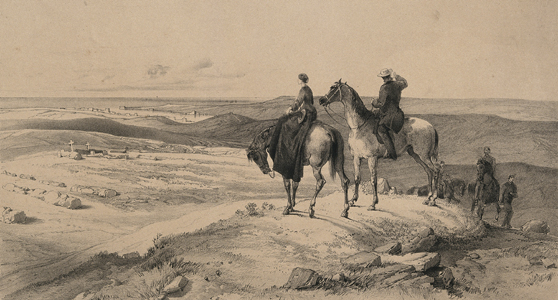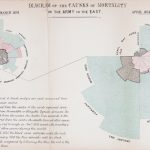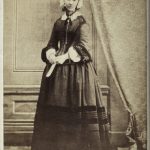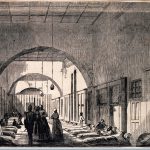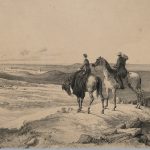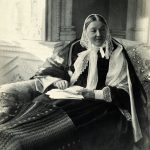A statistical campaign: Florence Nightingale and Harriet Martineau’s England and her Soldiers
Abstract
https://dx.doi.org/10.15180/160504/001This essay is an account of the making of England and her Soldiers (1859) by Harriet Martineau and Florence Nightingale. The book is a literary account of the Crimean War, written by Martineau and based on Nightingale’s statistical studies of mortality during the conflict. Nightingale was passionate about statistics and healthcare. Whilst working as a nurse in the Crimea, she witnessed thousands of soldiers die of infectious diseases that might have been prevented with proper sanitation. After the war, she launched a campaign to convince the British government to make permanent reforms to military healthcare, compiling a dataset on mortality in the Crimea. She worked with the government’s Royal Commission investigating healthcare during the war, but also worked privately with Martineau to publicise her findings. Martineau and Nightingale grasped that the lay reader was more receptive to statistical information in a literary format than in dense statistical reports. As such, Nightingale’s data was interwoven with Martineau’s text. The pair illustrated their book with Nightingale’s ‘Rose Diagram’, a statistical graphic which simply illustrated the rate of mortality.
Keywords
Crimea, Crimean War, Disease, England and her Soldiers, Florence Nightingale, Florence Nightingale Museum, Harriet Martineau, Healthcare, Literature, Martineau, mathematics, Mathematics Gallery, medicine, Military, Nightingale, nineteenth century, Nursing, Sanitation, Science Museum, Statistics, Victorian
Introduction
https://dx.doi.org/10.15180/This book is not a work of invention. It is no fancy-piece…
Harriet Martineau, England and her Soldiers, 1859
In 1859, the writer Harriet Martineau and the statistician Florence Nightingale published a little-known book called England and her Soldiers. A literary account of the Crimean War which marries Martineau’s text with Nightingale’s statistical studies, the book was intended to inform the public of gross failings in military health care provision during the conflict. Perhaps most significantly, the pair illustrated their argument with Nightingale’s ‘Rose Diagram’, a statistical graphic which demonstrates that the primary cause of death amongst soldiers was infectious disease, not injury incurred in battle. As Martineau firmly asserts in the preface, England and her Soldiers is no ‘work of invention’ (Martineau, 1859, p 5); rather, it is a serious endeavour to campaign for better military health care.
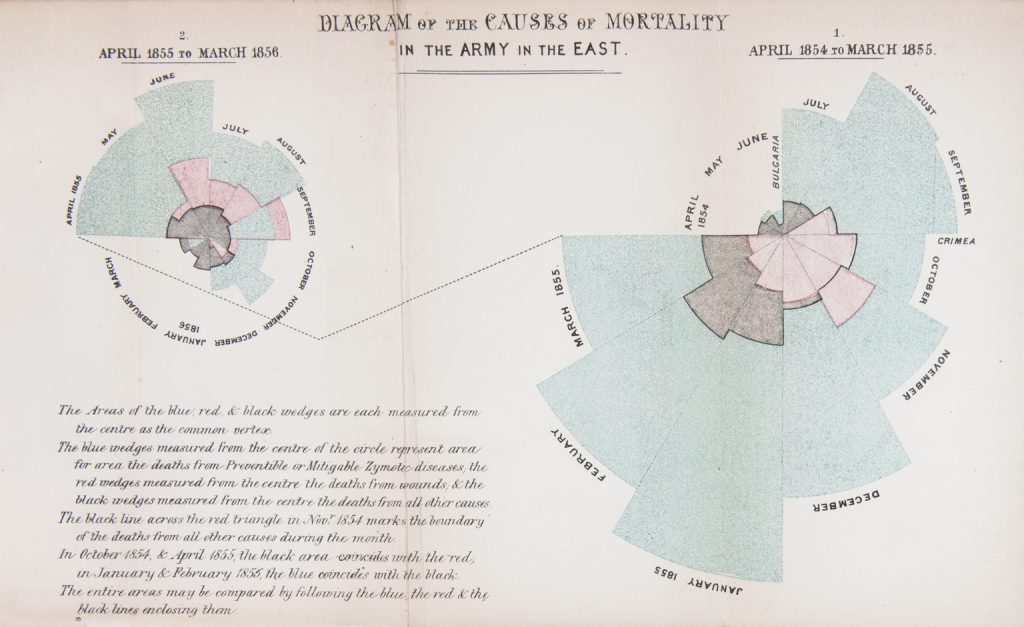
Nightingale believed diagrams to be a vital means of communicating statistics to non-specialist audiences, writing, ‘diagrams are of great utility for illustrating certain questions of vital statistics by conveying ideas on the subject through the eye, which cannot be so readily grasped when contained in figures’ (Nightingale, 1858). In the ‘Rose Diagram’ – also known as the ‘Coxcomb’ or ‘Wedges’ (Small, 2010, p 1) – twelve wedges, one for each month of the year, are arranged around a point. The area of each wedge, measured from the central point, corresponds to the number of mortalities that month, with a larger wedge indicating a higher rate of mortality. Each wedge is further divided into blocks of colour, which represent the causes of mortality. Blue indicates death from contagious disease, red indicates death from wounds, and black represents any other cause of death. The diagram on the right shows that in the year 1854–1855, when sanitation was poor, disease was the most common cause of death. The diagram on the left shows that in the year 1855–1856, after sanitation was improved, death by disease was drastically reduced.
Nightingale’s ‘Rose Diagram’, and its deployment in England and her Soldiers, remains a prime example of the way complex statistics can be communicated simply in visual formats. Indeed, a copy of England and her Soldiers (generously lent by the Florence Nightingale Museum) will be displayed in the Science Museum’s new Mathematics Gallery, which opens later this year.[1] This essay explores the making of Martineau and Nightingale’s book, from its basis in Nightingale’s experience during the Crimean War, to its publication and distribution. Beginning with an account of Nightingale’s early life and career, it continues to her time in the Crimea, describing the events which led her to produce England and her Soldiers. The women’s collaboration, and their methodological approach to communicating the facts of the war to the general public, are then explored in the latter half of the essay.
Florence Nightingale and the Crimean War
https://dx.doi.org/10.15180/160504/002By the time war broke out in 1853, Nightingale was an accomplished statistician and experienced nursing administrator. Born into an upper-middle class family with liberal-humanitarian views, Nightingale was raised in privilege. She and her sister, Parthenope, were educated to university level at home by their father, who taught them mathematics, Latin and Greek. Outside of their studies, the sisters were introduced to a wide range of intellectuals by their parents, including the mathematician Charles Babbage (Magnello, 2010, p 18).
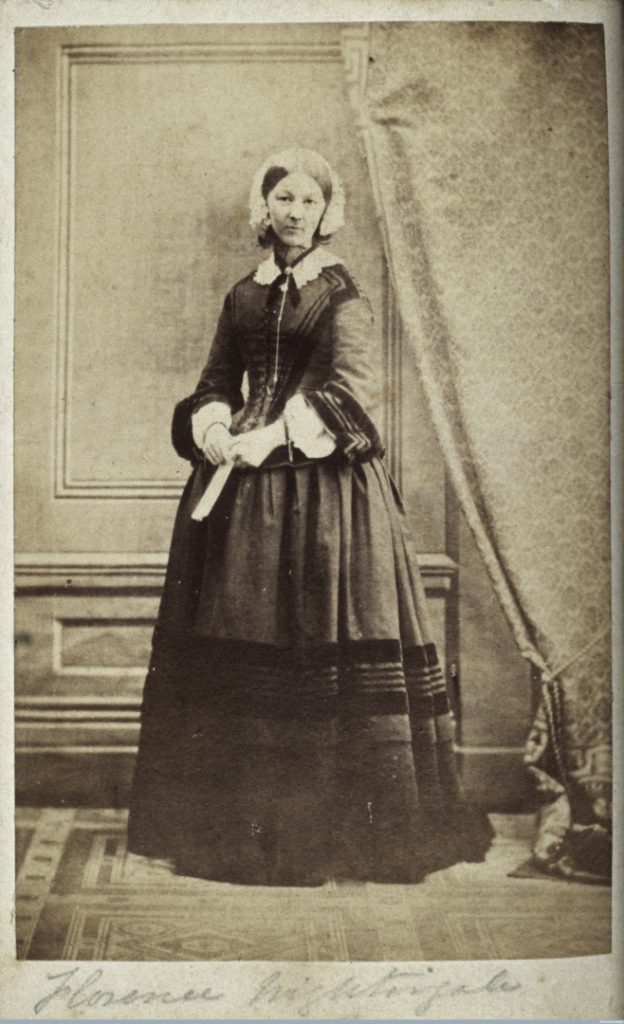
An enthusiastic mathematician from an early age, Nightingale began taking private lessons with a Cambridge-trained mathematician at the age of twenty. Statistics became her primary mathematical interest; indeed, she would later call it ‘the most important science in the world’ (Magnello, 2010, p 19). Yet mathematics was not Nightingale’s only passion: she believed that nursing, the vocation for which she is now best known, was her calling from God. For Nightingale, mathematics and nursing were not mutually exclusive. Rather, the two complemented each other; even as a student she undertook private statistical studies of public health, amassing a personal dossier of data (Magnello, 2010, p 20).
Nightingale was working as Superintendent of the Hospital for Invalid Gentlewomen in Harley Street when the war began. She had plans to leave the hospital and establish a school for nurses, but all such ambitions were delayed when she was called upon to offer her services in the Crimea (Goldie, 1997, p 1). Nightingale was closely acquainted with numerous politicians, including Sidney Herbert, the Secretary of War at the outbreak of the Crimean conflict (Magnello, 2010, pp 18, 22). Keenly aware of deficiencies in the army’s medical care, Herbert asked Nightingale to be ‘Superintendent of the female nursing establishment in the English General Military Hospitals in Turkey’ (Matthew, 2009 [2004]). Nightingale agreed and was sent to the Crimea with 38 female nurses in October 1854 (Magnello, 2010, pp 18, 20).
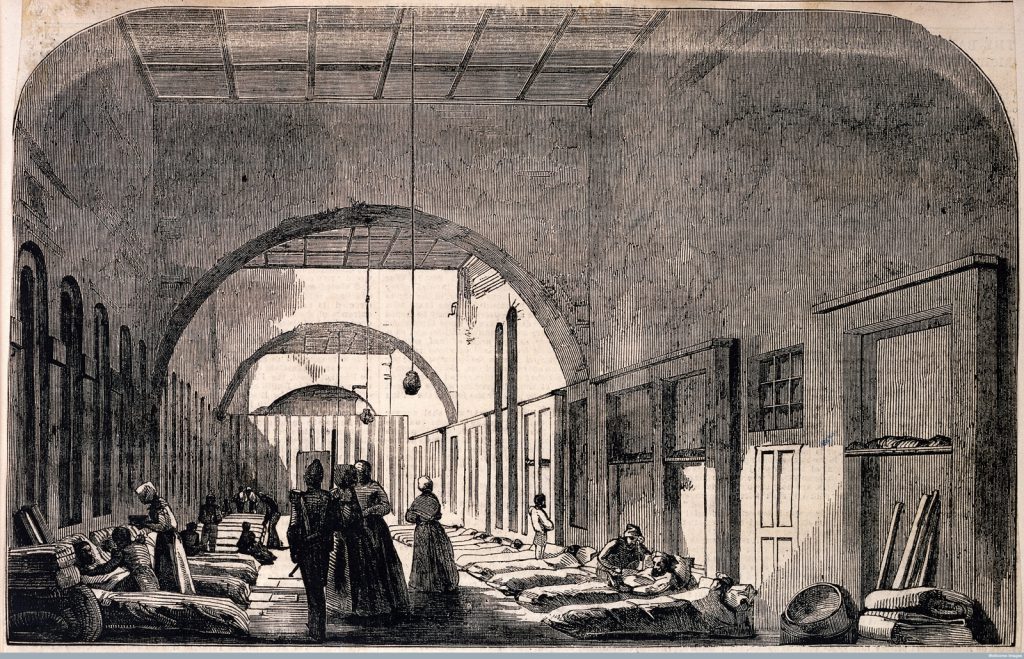
Conditions in the Crimea were dire. Infectious disease was rife: soldiers were dying in their thousands of illnesses including typhus, typhoid, cholera and dysentery (Lambert, 2011 [1990], p 143). Shortly after her arrival, Nightingale wrote to her friend Dr William Bowman, describing the horrors she was facing:
But oh! you gentlemen of England, who sit at home in all the well-earned satisfaction of your successful cases, can have little idea from reading the newspapers, of the horror & misery (in a military Hospl.) of operating upon these dying and exhausted men […] I have no doubt that Providence is quite right and that the Kingdom of Hell is the best beginning for the Kingdom of Heaven, but that this is the Kingdom of Hell no one can doubt.
Nightingale endeavoured to reduce infection and improve efficiency, but her resources were severely limited (Magnello, 2010, p 23). In letters to Herbert, she bemoans the inexperience of her staff and calls for greater resources, requesting the most basic of supplies: plates and dishes, knives and forks, socks, matting, disinfectant, mops, towels, and scissors (Nightingale, 1997 [21 December 1854], p 52; Nightingale, 1997 [25 December 1854], p 59). Openly critical, Nightingale chastises Herbert for sending her so ill-equipped: ‘You have sacrificed the cause, so near my heart. You have sacrificed me, a matter of small importance now’ (Nightingale, 1997 [15 December 1854], p 51).
Criticism of the government’s management of the conflict grew and, in January 1855, the House of Commons passed a motion for a committee of inquiry into the state of the army (Matthew, 2009 [2004]). In February 1855, a Sanitary Commission was appointed to investigate and correct conditions in the Crimea. Led by Dr John Sutherland and Robert Rawlinson, the Commission radically improved sanitation in the hospitals (McDonald, 2010, pp 5, 24). The subsequent dip in instances of infectious disease is largely attributed to these improvements. It was this – the prevention and limitation of infectious disease – which became the focus of Nightingale’s campaigns after the war.
Towards reform
https://dx.doi.org/10.15180/160504/003By the time war ended in 1856, British losses totalled 21,097, of which 16,323 were deaths by disease (Lambert, 2011 [1990], p 15). Returning to England, Nightingale was determined to see that permanent reforms were made. To this end, she set about producing a persuasive set of statistics from the data she had gathered in the Crimea. This approach was not without precedent; indeed, by the time of the Crimean War, statistics were a popular means of instigating social change.
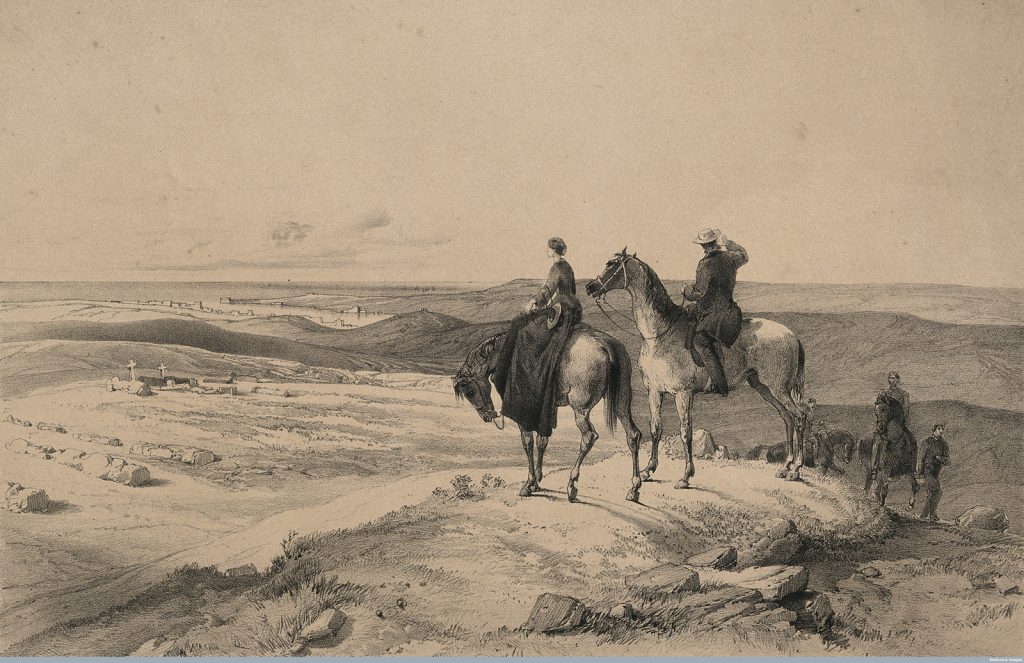
The science of statistics was enthusiastically developed throughout the nineteenth century, especially in Britain. The Royal Statistical Society (of which Nightingale later became the first female fellow) was founded in 1833 and was primarily concerned with the statistical study of social conditions (Smith, 1970, p 1). Figures such as William Farr and Edwin Chadwick carried out studies which led to the passing of the Public Health Acts, aimed at improving the living conditions of the poor. Reports on social conditions were produced in great quantity, with notable texts including Factory Inspector’s Report (1839), Chadwick’s Report on the Sanitary Conditions of the Labouring Population (1842), the Royal Commission on the Health of Towns (1844) and the Draining and Sewerage of Towns Report (1852) (Smith, 1970, p 28).
Nightingale’s own methodology for gathering data has been described by scholar Lynn McDonald as follows:
…read the best information available in print, especially government reports and statistics; interview experts; if the available information is inadequate send out your own questionnaire; test it first at one institution; consult practitioners who use the material; send out draft reports to experts for vetting for publication.
In the case of the Crimea, ‘the best information available’ was almost certainly inadequate. Upon her arrival, Nightingale was dismayed not only by the environmental conditions, but by the haphazard record keeping in the hospitals:
… there was a complete lack of co-ordination among hospitals and no standardised or consistent reporting. Each hospital had its own nomenclature…and classification of diseases, which were then tabulated on different forms, making comparisons impossible. Even the number of deaths was not accurate; hundreds of men had been buried, but their deaths were not recorded.
Magnello, 2010, p 23
To further confuse matters, data for the hospitals at Scutari and Koulali was combined for some time, making it difficult to identify trends in individual hospital environments (McDonald, 2010, p 33).
Subsequently, Nightingale spent a great deal of time interrogating the dataset, attempting to aggregate as accurate a set of numbers as possible. She dedicated seven months to this task, consulting experts for advice on methods and supplementary data. Perhaps most significantly, she sought the help of William Farr, who provided comparable datasets on mortality amongst civilians, and advised Nightingale on the development of the ‘Rose Diagram’ (Magnello, 2010, p 23).[2]
Once she had a suitable dataset, Nightingale used it to lobby the government for reform, initially through official channels and later more subversively. Her first port of call was the Royal Commission, appointed after the war ‘to inquire into the regulations affecting the sanitary condition of the army, the organisation of military hospitals, and the treatment of the sick and wounded’ (Royal Commissioners, 1858). Nightingale’s testimony and statistical analyses were published with the Commissions’ findings in 1858. Her contribution included a graphic which appears to be the precursor of the ‘Rose Diagram’; this compares the rate of mortality in the army with that of Manchester, then the city with the highest mortality rate in the country (Royal Commissioners, 1858).
The publication of the Royal Commission in February 1858 caused a stir amongst the public, with The Times noting:
… the chief cause of the evil is the deficient accommodation and the consequent overcrowding in barracks…the closeness, the dirt, the indecency spoken of remind one of a slave ship more than of a place for English soldiers to inhabit.
Nightingale had hoped that Lord Panmure, head of the Royal Commission, would instigate reforms in tandem with publication; however, Panmure’s influence came to an abrupt end with the unexpected resignation of Viscount Palmerston as prime minister and the subsequent change of administration. Eager to avoid further delay, Nightingale began to take matters into her own hands (Bostridge, 2008, pp 333–334).
Collaborating with Martineau
https://dx.doi.org/10.15180/160504/004In addition to the Commission’s publicly distributed report, Nightingale had completed a ‘confidential report’ for the government, known as Notes on Matters Affecting the Health of the British Army. Never officially published, Notes featured the first appearance of the ‘Rose Diagram’.
It had not been well-received: numerous pamphlets and an anonymous paper (attributed to senior medical officials) were published refuting its contents (Small, 2010, p 2). Nightingale began to leak Notes, sending it to influential figures including the novelist Elizabeth Gaskell, statistician Edwin Chadwick and, of course, Harriet Martineau.
On 30 November 1858, Nightingale wrote to Martineau, hoping to appeal to the latter’s interest in the military:
I know that you have been interested about our army matters and therefore, although an old story now, I venture to send you a copy of a ‘confidential’ report of mine to the War Office. It is really ‘confidential’ and no copy has been (or is to be) presented to the House of Commons. Therefore it is only for your own private reading that I send it, if you have still time, strength or inclination for this subject.
(Nightingale, 2010 [30 November 1858], p 993)
Nightingale’s report impressed Martineau, who called it ‘one of the most remarkable political or social productions ever seen’ (Bostridge, 2008, p 342). Thus began a fruitful collaboration and friendship.
The two women had much in common. Born in 1807, Martineau had, like Nightingale, been intellectually curious from an early age and was mostly educated at home. Her studies included classics, ancient and modern languages, literature, philosophy and history. With an industrialist father, she was raised in relative comfort until the 1820s, when the family’s economic situation was severely reduced. Subsequently, Martineau was obliged to support herself financially; she quickly established herself as an author working in a diverse range of formats, including reviews, novels, biographies, how-to manuals, newspaper columns, essays and articles (Hoecker-Drysdale, 2001, p 76). Economic necessity aside, Martineau was passionate about writing; like Nightingale, she had a keen sense of vocation, writing in her autobiography:
Authorship has never been for me a matter of choice. I have not done it for amusement, or for money, or for fame, or for any reason but because I could not help it. Things were pressing to be said; and there was more or less evidence that I was the person to say them.
(Martineau, 2010 [1877], p 188; Hoecker-Drysdale, 2001, p 77)
A leader-writer of the left-wing newspaper Daily News, Martineau published extensively on social issues including women’s rights, the poor laws, and the abolition of slavery. She frequently chose to convey her ideas through fiction, weaving political arguments into a series of popular tales. Well-connected, she was closely acquainted with a number of political figures, including William Gladstone (Woodham-Smith, 1950, p 315 ).
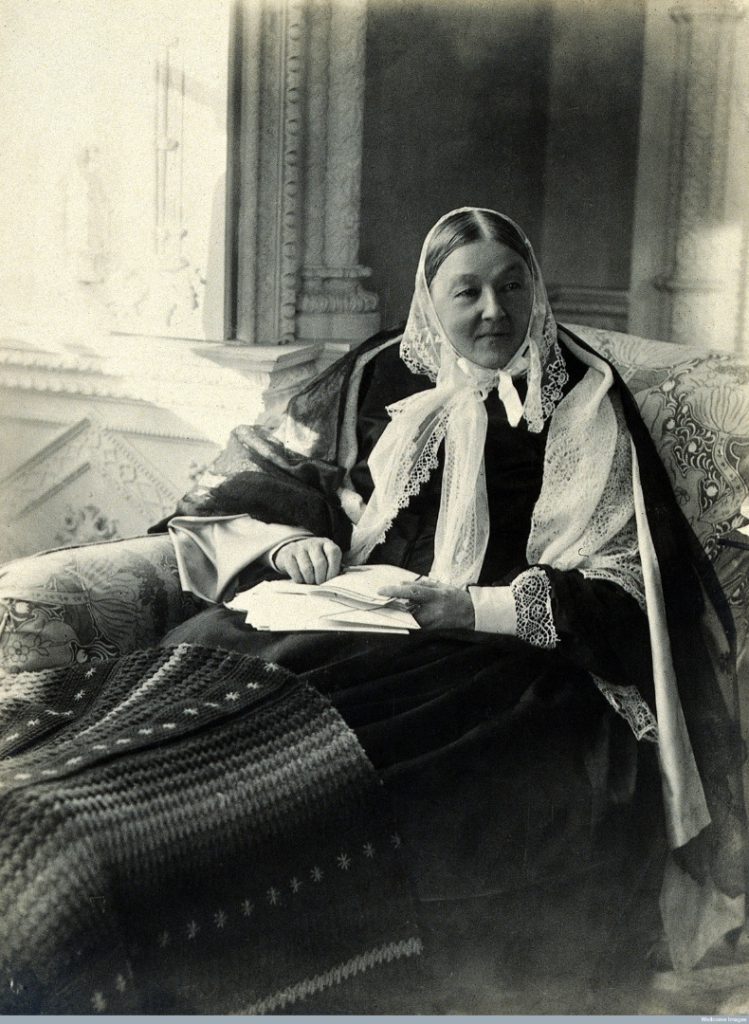
Prior to her collaboration with Nightingale, Martineau had been acquainted with the Nightingale family, though not Florence herself. Like many others, she had read of Nightingale’s endeavours in the Crimea in the press. She shared Nightingale’s commitment to empirical methods of observation – a cause she had championed in her 1838 methodology, How to Observe Morals and Manners – and had even written an article supporting a fund for Nightingale and her nurses in the Crimea (McDonald, 1994, pp 51–52).
Given these circumstances, it is perhaps unsurprising that Martineau responded so positively to Nightingale and her cause. Their subsequent letters – which date as late as the 1870s – reveal a strong professional and personal relationship. Though the pair never met, their correspondence is warm and affectionate, with salutations moving quickly from ‘Dear Madam’ to ‘Dear Friend’, and closings from ‘yours faithfully’ to ‘yours truly and gratefully’ (McDonald, 1994, pp 206–207).
Martineau soon began to publicise Nightingale’s findings, carefully excluding confidential data, first in a series of articles in the Daily News, and ultimately in England and her Soldiers (Bostridge, 2008, p 342). She shared Nightingale’s outrage, writing in the Daily News on 11 February 1859:
There is no excuse for the loss of an hour when the lives of our soldiers and the military strength of the nation are in question… [N]ow that we have learned that military Hygiene is something different from the art of amputating limbs and treating dysentery or sunstroke, we shall be guilty of murder on a wholesale scale if we do not apply our new knowledge.
(Logan, 2010, p 248)
The book was very much a collaborative effort, as Martineau explained in a letter to Henry Reeve:
The book is to be mine, as to form, style, responsibility in every literary sense […] but F. N. is (at my request) to see the whole, in order to preclude mistakes of fact & to keep me informed of the latest movements.
Bostridge, 2008, p 342
Combining statistics with literature was not without precedent. Indeed, other authors had seized upon the new wealth of statistical data, both as a means of lending credibility to their stories, and to make political statements. This included Charles Kingsley, who used the 1843 ‘Report on the Employment of Women and Children in Agriculture’ in his novel, Yeast: A Problem (1848), and Disraeli, whose novel Sybil, or The Two Nations (1845) drew on reports including the ‘Reports of the Children’s Employment Commission’, the ‘Report from the Select Committee on Payment of Wages’ (1842) and the ‘Report on the Commission to Inquire into the Plight of the Handloom Weavers’ (1841) (Smith, 1970).
Like Disraeli and Kingsley, Martineau and Nightingale grasped that the lay reader was more receptive to statistical information in a literary format than in the government issued reports known as ‘Blue Books’ (Magnello, 2010, p 21). Indeed, Martineau notes in the preface to England and her Soldiers that ‘few persons read Blue Books; and very few have time to go through the mass of evidence collected by the various authorities who have reported on the state of the army’ (Martineau, 1859, p vi). Accordingly, the book was carefully pitched to appeal to a wide audience, particularly soldiers. It was also deftly presented so as to avoid censure. Nightingale outlined this strategy in a letter to Martineau:
I feel for two reasons that it is desirable to work up the instructional matter into a narrative by introducing the battles […] My two reasons are (1) that it will be impossible for me to gain admission into the regimental libraries for this book unless the instructional matter is disguised in narrative (no chaplain or inspector would sanction it); (2) that no careless person (and soldiers too are careless) would ever read it without the battles.
(Nightingale, 2010 [ 21 March 1859], p 1004)
This is not to say that Martineau and Nightingale’s message is hidden away or only hinted at, quite the opposite. The message – that infectious disease was deadly, preventable and all too rife in the army – is explicitly laid out. For instance, in this passage, Martineau plainly argues her point, with the assistance of Nightingale’s data:
Take any set of Englishmen of the same age, – say between 15 and 45, – and you will find the annual mortality 1 in 100 from epidemic and constitutional disease, from local disease, and from violent death collectively; whereas the deaths from those causes were, in our army in the East, nearly 23 per cent., – only 3 percent being from wounds in hospital, while more than 18 were from epidemic disease. The object of introducing this last illustration is to show how little the wounds received in action have to do with the soldier’s peril. The deduction of the 3 per cent. for shot, sword, bayonet, and accidents, leaves a mortality of nearly 20 per cent.
Martineau, 1859, p 41
Strikingly, the text of England and her Soldiers also goes some way to puncturing the popular myth of Nightingale as the untouchable heroine of the Crimean War (Small, 2010, p 150). This is not to say that Nightingale appears in a negative light. Indeed, she is described as a welcome and benevolent presence: ‘What a change it was when Miss Nightingale and the nurses appeared, with hands full of good things at the right time!’ (Martineau, 1859, p 214). Yet conditions at the Scutari hospitals where Nightingale was based are reported damningly, as they had not been in Nightingale’s public reports (Small, 2010, p 150):
…the ground within the Barrack Hospital square was wet, from being insufficiently drained; six dead dogs lay just under one ward window, and a dead horse ‘for some weeks in the aqueduct!’ […] the filth, vermin, and rats, alive and dead, under the wooden divans on which the men lay, were in themselves a sufficient poison.
Martineau, 1859, p 191
Nightingale thus appears, not as the ministering angel (Bostridge, 2008, p 342) valiantly healing all, but as a well-intended professional rendered helpless by government inefficiencies.
Publication and legacy
https://dx.doi.org/10.15180/160504/005When England and her Soldiers was published, Nightingale applied to her friend Colonel Lefroy (the inspector general of army schools) for permission to send a copy to each regiment, but was refused. Though Lefroy admired the book, the request was vetoed by Sidney Herbert, by then Chair of the Royal Commission (Matthew, 2009 [2004]), as he feared it would make the men ‘discontented’ (Nightingale, 2010 [21 August 1859], p 1008).
It is difficult to quantify the success or otherwise of England and her Soldiers. Gradual, but significant, changes were made to the governance of army healthcare in the years that followed its publication, including the creation of a permanent Army Sanitary Committee (Bostridge, 2008, pp 343–344). Outside of Britain, the book became popular amongst American medical professionals. In 1861, Martineau wrote to Nightingale:
Our book, England and her Soldiers, is at present quoted largely and incessantly in American medical journals, as a guide in the newness of military management in the Northern states […] the medical journals are learning from us; and I am sure you will be glad to hear it.
Martineau, 2009 [20 September 1861], p 148
England and her Soldiers was one part of a broader campaign, by Nightingale, Martineau and others. Many of the subsequent legislative changes are likely to have been kick-started by Nightingale’s earlier work on the Royal Commission; as such, it is impossible to say whether England and her Soldiers directly influenced the reforms that followed it. Nonetheless, it remains a fascinating example of the way Nightingale and Martineau were attempting to communicate statistical data and hard facts to a general audience, and demonstrates their remarkable commitment to their cause.
Acknowledgements
With thanks to the Florence Nightingale Museum and in particular to Head Curator Natasha McEnroe for her advice on including the book in the Mathematics Gallery. I am grateful also for guidance and support from Kate Steiner, Richard Nicholls, and my colleagues on the mathematics gallery project, David Rooney (Lead Curator), Claire Kennard (Assistant Curator), and Jessica Bradford (Interpretation Manager). Finally, my thanks to the peer reviewer for their useful suggestions.
Tags
Footnotes
Back to text
Back to text

